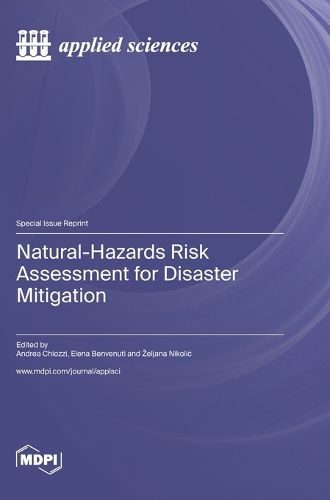Readings Newsletter
Become a Readings Member to make your shopping experience even easier.
Sign in or sign up for free!
You’re not far away from qualifying for FREE standard shipping within Australia
You’ve qualified for FREE standard shipping within Australia
The cart is loading…






This title is printed to order. This book may have been self-published. If so, we cannot guarantee the quality of the content. In the main most books will have gone through the editing process however some may not. We therefore suggest that you be aware of this before ordering this book. If in doubt check either the author or publisher’s details as we are unable to accept any returns unless they are faulty. Please contact us if you have any questions.
Knowledge and awareness of the risks generated by natural hazards are essential requirements for the enhancement of communities' resilience to disasters. United Nations directives have recently pointed out the necessity of undertaking actions aimed at anticipating, managing, and mitigating disaster risks to reduce their economic and social impact and protect the health, socioeconomic assets, cultural heritage, and ecosystems of communities and countries. While the increasing occurrence of disasters caused by meteorological events, such as floods, storms, and droughts, can be directly ascribed to the consequence of climate change, disasters induced by earthquakes and tsunamis are increasing even if their frequency of occurrence is historically unchanged. This Special Issue addresses concepts, methods, and predictive methodologies for assessing natural hazard risks. It presents fifteen articles focusing on the single-risk assessment of a broad range of natural hazards, such as earthquakes, river/sea floods, meteotsunamis, tornados, hydrological and meteorological drought, liquefaction, as well as on multirisk assessment in the presence of multiple hazards. The adopted methodologies rely on (a) quantitative, semi-quantitative, and qualitative methods for the assessment of the risks related to natural hazards; (b) risk analysis at different scales; (c) multi-hazard risk assessment techniques; (d) real-time hazard monitoring and warning systems; (e) disaster mitigation strategies; and (f) risk management and emergency planning on multiple scales.
$9.00 standard shipping within Australia
FREE standard shipping within Australia for orders over $100.00
Express & International shipping calculated at checkout
This title is printed to order. This book may have been self-published. If so, we cannot guarantee the quality of the content. In the main most books will have gone through the editing process however some may not. We therefore suggest that you be aware of this before ordering this book. If in doubt check either the author or publisher’s details as we are unable to accept any returns unless they are faulty. Please contact us if you have any questions.
Knowledge and awareness of the risks generated by natural hazards are essential requirements for the enhancement of communities' resilience to disasters. United Nations directives have recently pointed out the necessity of undertaking actions aimed at anticipating, managing, and mitigating disaster risks to reduce their economic and social impact and protect the health, socioeconomic assets, cultural heritage, and ecosystems of communities and countries. While the increasing occurrence of disasters caused by meteorological events, such as floods, storms, and droughts, can be directly ascribed to the consequence of climate change, disasters induced by earthquakes and tsunamis are increasing even if their frequency of occurrence is historically unchanged. This Special Issue addresses concepts, methods, and predictive methodologies for assessing natural hazard risks. It presents fifteen articles focusing on the single-risk assessment of a broad range of natural hazards, such as earthquakes, river/sea floods, meteotsunamis, tornados, hydrological and meteorological drought, liquefaction, as well as on multirisk assessment in the presence of multiple hazards. The adopted methodologies rely on (a) quantitative, semi-quantitative, and qualitative methods for the assessment of the risks related to natural hazards; (b) risk analysis at different scales; (c) multi-hazard risk assessment techniques; (d) real-time hazard monitoring and warning systems; (e) disaster mitigation strategies; and (f) risk management and emergency planning on multiple scales.